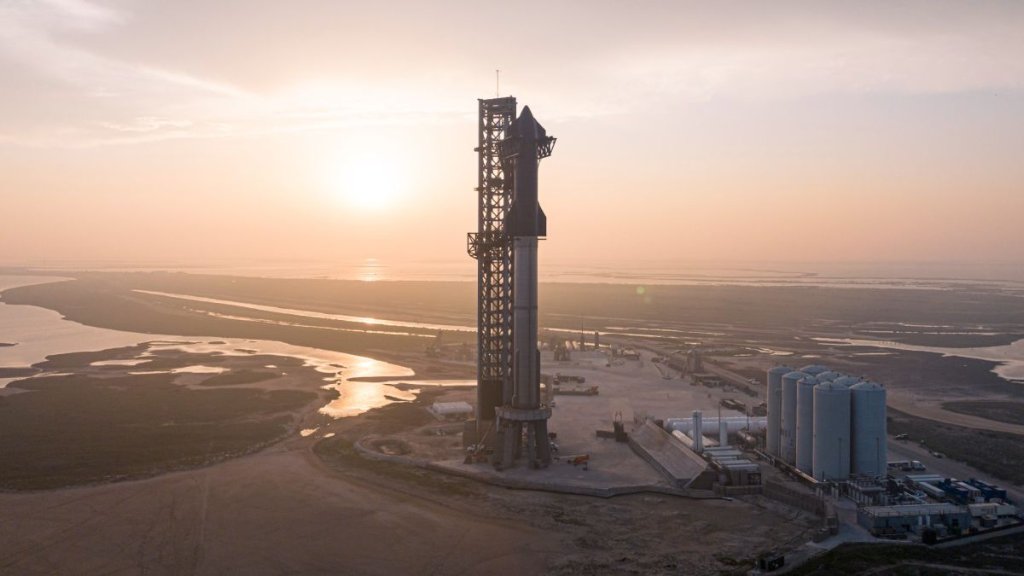Don’t hold your breath for a Thursday (April 20) liftoff of SpaceX’s giant Starship vehicle.
SpaceX is targeting Thursday for the first-ever space launch of Starship, the rocket-spacecraft combo that Elon Musk thinks will help humanity get a foothold on Mars. But it’s unclear if Starship will be ready to fly by then.
“The team is working around the clock on many issues. Maybe 4/20, maybe not,” Musk said via Twitter on Tuesday night (opens in new tab) (April 18).
Related: What time is SpaceX’s 1st Starship launch on April 20?
Technical issues already foiled the first try at a Starship space launch, which occurred on Monday (April 17). SpaceX called off that attempt with about nine minutes left on the countdown clock, citing a pressurization problem apparently caused by a frozen valve.
The coming launch attempt will take place from Starbase, SpaceX’s facility on South Texas’ Gulf coast. It will employ a first-stage vehicle called Booster 7 and an upper-stage prototype known as Ship 24.
If all goes according to plan, Booster 7 will splash down in the Gulf of Mexico about eight minutes after launch. Ship 24 will reach space and make a partial circuit of Earth before splashing down in the Pacific Ocean near Hawaii 90 minutes after liftoff.
SpaceX has stressed, however, that the Starship launch target could slip again, so don’t be disappointed if Thursday comes and goes with the 394-foot-tall (120 meters) vehicle still on the ground. And the company isn’t expecting full success, whenever liftoff occurs; this will be a test flight, after all.
“If we do make an attempt tomorrow, the chances of scrubs are high,” SpaceX’s commentator said during the webcast of the launch of 21 of the company’s “V2 Mini” Starlink broadband satellites today (April 19). “But whether a scrub or liftoff or a rapid unscheduled disassembly, or some combination of all of the above, excitement is pretty much guaranteed.”
(“Rapid unscheduled disassembly” is SpaceX talk for an explosion.)
SpaceX won’t attempt to recover either Booster 7 or Ship 24 on the coming test flight, but that will change as the Starship program continues to develop.
The mature architecture will be fully reusable, Musk has said, with each booster and spacecraft ideally flying multiple times per day. Indeed, the 33-engine booster, known as Super Heavy, will come back to Earth directly atop its launch mount, if all goes according to plan, guided down to a soft touchdown by the launch tower’s “chopstick” arms.
Mike Wall is the author of “Out There (opens in new tab)” (Grand Central Publishing, 2018; illustrated by Karl Tate), a book about the search for alien life. Follow him on Twitter @michaeldwall (opens in new tab). Follow us on Twitter @Spacedotcom (opens in new tab) or Facebook (opens in new tab).

